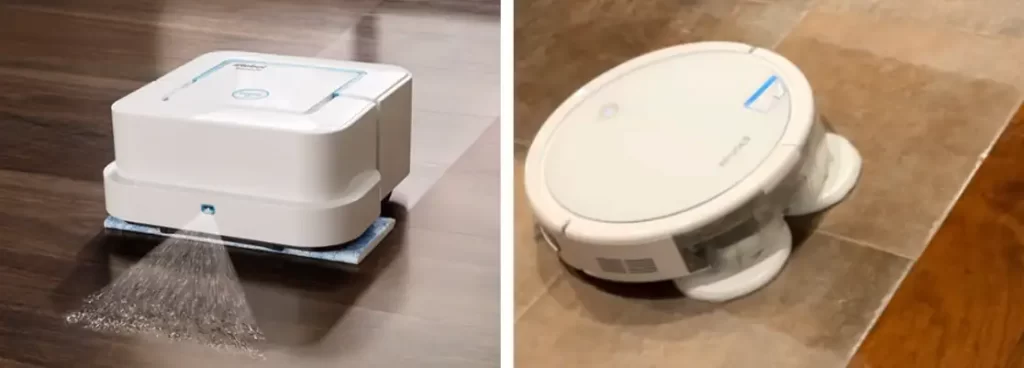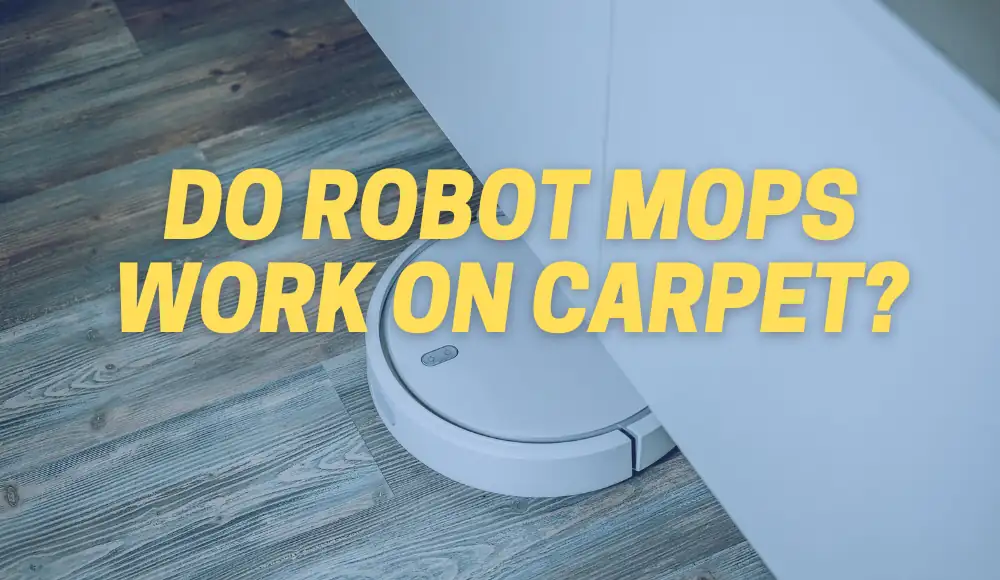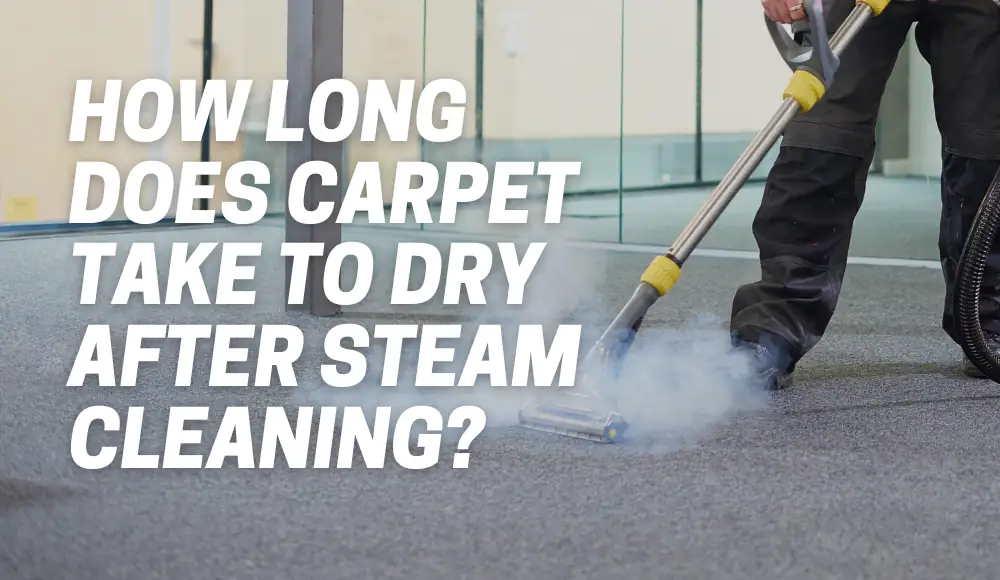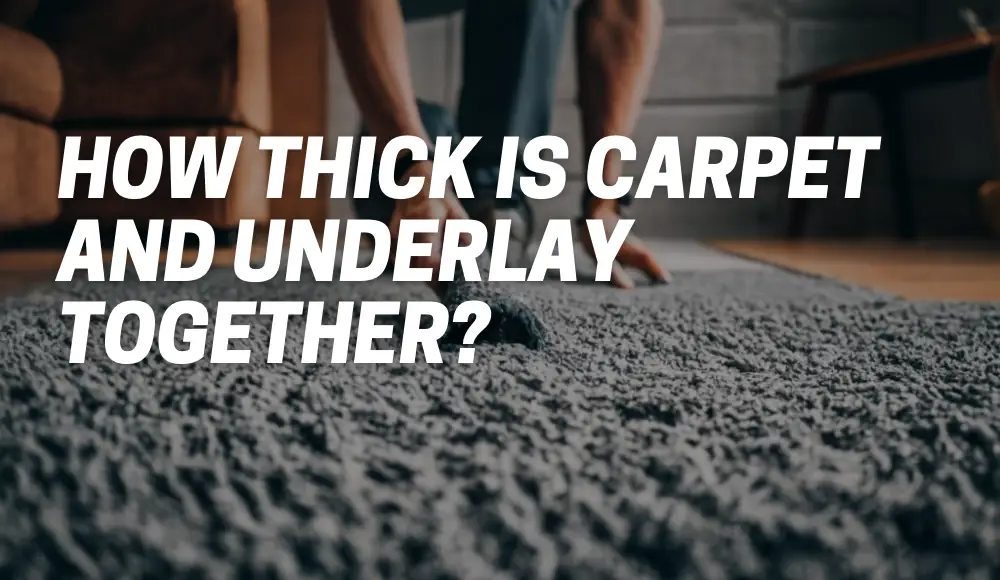Robot mops have become increasingly popular in recent years, promising to simplify our cleaning routines and keep our floors sparkling clean. However, if you have carpeted floors, you may be wondering do robot mops work on carpet or not.
In this article, we will delve into the capabilities of robot mops when it comes to carpeted surfaces and explore whether investing in a robot vacuum cleaner with mop functionality is worth it.
Let’s dive in!
How Robot Mops Work
First things first.
The Fascinating Technology Behind Robot Mops
Robot mops use a combination of advanced sensors, motors, and algorithms to navigate around rooms and clean floors efficiently.
Most robot mops have two water tanks – one for clean water and another for dirty water. A microfiber or disposable mop pad is attached to the bottom of the robot, which picks up dirt and grime as it moves across the floor.
Sensors on the robot help it detect obstacles such as walls, furniture, or stairs so that it can safely navigate around them.
Some models even use mapping technology to create a virtual map of your home so that they know where they have already cleaned and where they still need to go.
Comparison to Traditional Mop and Bucket Method
Compared to traditional mopping methods using a bucket filled with water and cleaning solution, robot mops are far more convenient.
With a robot mop, you simply set it down on the floor in the area you want to clean, press a button, or schedule cleaning times from an app on your phone, and let the machine do the work for you.
Traditional mopping requires more physical effort from you – filling up a bucket with water and cleaning solution, wringing out mops by hand, or using another tool like a mop wringer bucket.
You also have to spend time dipping dirty mop heads repeatedly into the cleaning solution.
With robot mopping technology advances in recent years – you can now sit back while your floors get cleaned quickly without any additional manual effort required!
Types of Carpets Robot Mops Can Clean
Robot mops are becoming more and more popular due to their convenience and efficiency.
However, before using a robot mop on your carpet, it’s important to understand what type of carpets they can clean. There are two main types of carpets: low-pile and high-pile.
Low-pile carpets have short fibers that are tightly packed together, while high-pile carpets have longer fibers that are looser and more plush. Robot mops work best on low-pile carpets since they can easily navigate around the fibers without getting stuck.
Low-Pile Carpets
Low-pile carpets are ideal for robot mopping as they allow the mop to glide smoothly over the surface without any obstruction.
These types of carpets include Berber, Saxony, Frieze, and Cut-Pile styles.
High-Pile Carpets
On the other hand, high-pile or shaggy carpets may not be suitable for robot mopping since their long fibers can get tangled in the mop’s brushes or wheels.
High pile carpet styles include plush shag rugs or Frieze shaggy piles. It’s also important to note that some robotic models may not be suitable for cleaning certain carpet materials such as wool or silk due to their delicacy.
While robot mops can effectively clean low-pile carpets with ease, it may not be best for all types of carpet materials as well as high-pile rugs where dirt and dust particles could get trapped deep into the piles leaving them uncleaned causing respiratory issues when inhaled.
It’s crucial to select a model with appropriate settings and brush rolls that would work best on your specific type of carpet before giving it a go.
Are Mopping Robots Worth It If You Have Carpets?
When it comes to mopping robots and carpets, there are a few key considerations to keep in mind.
While these robotic devices excel at navigating hard floors, such as tile or hardwood, their performance on carpeted surfaces can vary.
Let’s take a closer look at the factors that determine whether mopping robots are worth it for carpeted areas:
- Carpet Thickness and Pile Height: One of the primary challenges for robot mops on carpets lies in the carpet’s thickness and pile height. Robot mops are typically designed to work best on flat surfaces, making it difficult for them to effectively clean deep-pile carpets. The bristles or pads on mopping robots may struggle to penetrate deep into the carpet fibers, resulting in less thorough cleaning.
- Suction Power: Another crucial aspect to consider is the suction power of the robot vacuum cleaner. While some robot vacuum cleaners with mopping capabilities do offer decent suction, they might not be as effective in extracting dirt and debris from carpets compared to traditional vacuum cleaners. This limitation can impact the overall cleanliness of your carpeted floors.
- Navigation and Obstacle Detection: Robot mops utilize various sensors and navigation systems to move around your home autonomously. However, certain carpet types, especially those with high pile or shaggy textures, can pose challenges for these robots. Uneven surfaces and changes in elevation might disrupt their navigation or even prevent them from properly cleaning the carpeted areas.
- Water Control and Absorption: When it comes to mopping, controlling the amount of water used is crucial. Excessive moisture can damage carpets and lead to mold or mildew growth. Robot mops typically have mechanisms to regulate the water flow, but they may not be as precise as manually controlled mops. Additionally, some carpets may absorb water more readily, making it harder for the robot mop to achieve optimal cleaning results.
Considering these factors, it’s clear that mopping robots might face limitations when it comes to cleaning carpets effectively.
However, that doesn’t mean they are entirely ineffective. Let’s explore whether robot mops can still serve a purpose in carpeted homes.

Do Robot Mops Work on Carpet?
While robot mops may not deliver the same level of performance on carpets as they do on hard floors, they can still provide some benefits.
Here are a few instances where robot mops can be useful for carpeted areas:
- Maintenance Cleaning: If your carpets are not heavily soiled and you primarily want to maintain their cleanliness, robot mops can help. They can remove light surface dirt and refresh your carpets between deeper cleaning sessions. Keep in mind that you might still need to rely on traditional vacuuming methods periodically to ensure a thorough clean.
- Multi-Surface Cleaning: If your home has a combination of hard floors and carpets, a robot vacuum cleaner with mop functionality can be a convenient all-in-one solution. These devices can transition seamlessly between different floor types, allowing you to automate your cleaning routine without needing separate tools for each surface.
- Daily Spot Cleaning: Robot mops can be useful for quick spot cleaning on carpets, especially for addressing spills or stains. You can simply guide the robot mop to the affected area, and it will work to remove the mess. However, for deep-set stains or stubborn dirt, manual spot-cleaning methods may still be necessary.
- Reducing Dust and Allergens: While robot mops may not provide deep carpet cleaning, they can contribute to reducing dust and allergens on the surface. Regular mopping with a robot can help control allergens, making it a valuable addition to your cleaning routine.
Although robot mops may not be the ultimate solution for thorough carpet cleaning, they can still be a helpful tool in specific situations.
If you have a combination of hard floors and carpets, and you primarily want maintenance cleaning and surface refreshment, a robot vacuum cleaner with mop functionality can streamline your cleaning efforts.
Is It Worth Buying a Robot Vacuum Cleaner with Mop?
When contemplating the purchase of a robot vacuum cleaner with mop capabilities, there are a few factors to consider to determine its worth:
- Your Cleaning Priorities: Assess your cleaning needs and priorities. If you have a predominantly carpeted home and deep carpet cleaning is of utmost importance, investing in a high-quality traditional vacuum cleaner might be more beneficial. However, if you value convenience, automation, and maintenance cleaning, a robot vacuum cleaner with mop can be a valuable addition.
- Floor Composition: Consider the overall composition of your floors. If you have a mix of hard floors and carpets, a robot vacuum cleaner with mop can offer versatility and convenience by effectively cleaning both surfaces. It’s worth noting that while the mopping function may not be as effective on carpets, the vacuuming capabilities can still provide value.
- Budget: Robot vacuum cleaners with mop functionality can vary in price range, depending on their features and brand. Consider your budget and weigh it against your cleaning needs. If you have limited resources, you may opt to invest in a traditional vacuum cleaner for carpets and use a separate robot mop or traditional mop for hard floors.
Self-emptying and self-cleaning robot vacuum and mop
Features to Look for in a Robot Mop for Carpet Cleaning
When it comes to choosing the right robot mop for cleaning your carpets, there are a few key features to consider.
These include suction power, brush roll type, and water tank capacity. Let’s take a closer look at each of these features.
Suction Power
The suction power of the robot mop is one of the most important factors to consider when looking for a model that is effective on carpets. Carpets can trap dirt and debris deep within their fibers, so you’ll want a robot mop that has enough suction power to lift out these particles.
When selecting a robot mop, look for models with high levels of suction power. This will ensure that the device can pick up as much dirt and debris as possible from your carpeted surfaces.
Brush Roll Type
The brush roll is another important factor to consider when selecting a robot mop for carpet cleaning. You’ll want a model that has an effective brush roll that can agitate and loosen any dirt or debris trapped in the carpet fibers. There are two main types of brush rolls: bristle and rubber.
Bristled brushes tend to be more effective on low-pile carpets, while rubber brushes are better suited for high-pile carpets. Make sure you select a model with the appropriate type of brush roll based on your specific carpet type.
Water Tank Capacity
The size of the water tank on your robot mop is also an important consideration when choosing a model for use on carpets.
A larger water tank will allow you to clean larger areas without having to stop and refill the tank frequently. In addition, some models may have adjustable water flow settings, which can be useful when cleaning different types of carpets.
For example, you may need more water flow to penetrate deep into high-pile carpets, while lower water flow may be adequate for low-pile carpets.
Overall, selecting a robot mop with the right combination of suction power, brush roll type, and water tank capacity can make a big difference in how effective the device is at cleaning your carpets.
Tips for Using a Robot Mop on Carpets
Prepping the Area Before Cleaning
Before using a robot mop on carpets, it’s important to prepare the area to get the best results. Start by vacuuming the carpet thoroughly to remove any loose dirt or debris.
This will ensure that the robot mop can focus on deep cleaning and won’t get clogged with larger particles.
Also, make sure to move any furniture or obstacles out of the way so that the robot mop can easily navigate around the room.
Adjusting Settings Based on Carpet Type
To achieve optimal cleaning results, it’s crucial to adjust your robot mop settings based on your carpet type. Some robot mops come with different modes designed specifically for carpets.
If your carpet has a shorter pile, then you may opt for a lighter setting, whereas if you have a high-pile or shag carpet, then you should choose a higher suction power setting.
Additionally, some robot mops come with brush rolls specifically designed for carpets which can help clean deep into fibers without causing damage.
Other Tips for Using Robot Mops on Carpets
One helpful tip is to avoid using too much water when cleaning carpets with a robot mop as excess moisture can sink down into carpet padding and cause mold or mildew growth over time.
Additionally, be sure to keep an eye out for any areas where dirt may accumulate more frequently such as high-traffic areas or around pets’ feeding bowls and litter boxes.
By following these tips and customizing settings based on your specific carpet type, you’ll be able to maximize your use of a robotic mop while keeping your carpets looking their best.
Conclusion
In conclusion, robot mops do have limitations when it comes to cleaning carpets effectively, primarily due to carpet thickness, suction power, and navigation challenges.
However, they can still serve a purpose in maintaining cleanliness, multi-surface cleaning, spot cleaning, and reducing dust and allergens on carpets.
When deciding whether to purchase a robot vacuum cleaner with a mop, evaluate your cleaning priorities, the composition of your floors, and your budget to determine if it aligns with your needs and offers the desired level of convenience.
Remember, while robot mops can automate certain cleaning tasks, they should not entirely replace manual cleaning methods for deep carpet cleaning. A combination of traditional vacuuming and occasional manual spot cleaning will still be necessary for optimal carpet maintenance.
Useful Tips for Cleaning Carpets:
- Vacuum your carpets regularly to remove surface dirt and dust.
- Treat spills and stains promptly using appropriate cleaning solutions.
- Consider professional carpet cleaning services for deep cleaning at regular intervals.
- Use carpet protectors or rugs in high-traffic areas to minimize wear and tear.
- Follow the manufacturer’s instructions for carpet care and maintenance.
By taking these factors into account and understanding the limitations of robot mops on carpets, you can make an informed decision about whether investing in a robot vacuum cleaner with mop functionality is worth it for your specific needs.
Remember, maintaining a clean and healthy home environment goes beyond the tools we use – it requires a holistic approach that combines both technology and manual cleaning methods.




